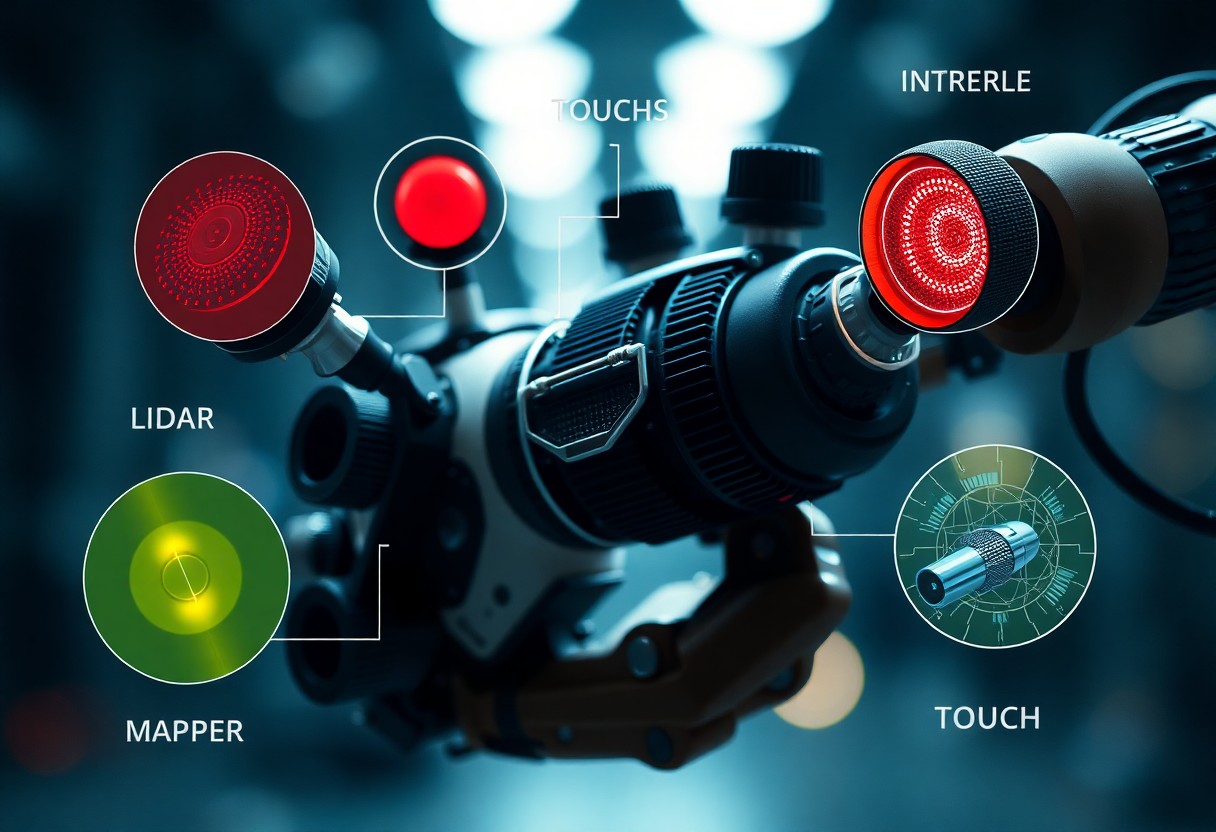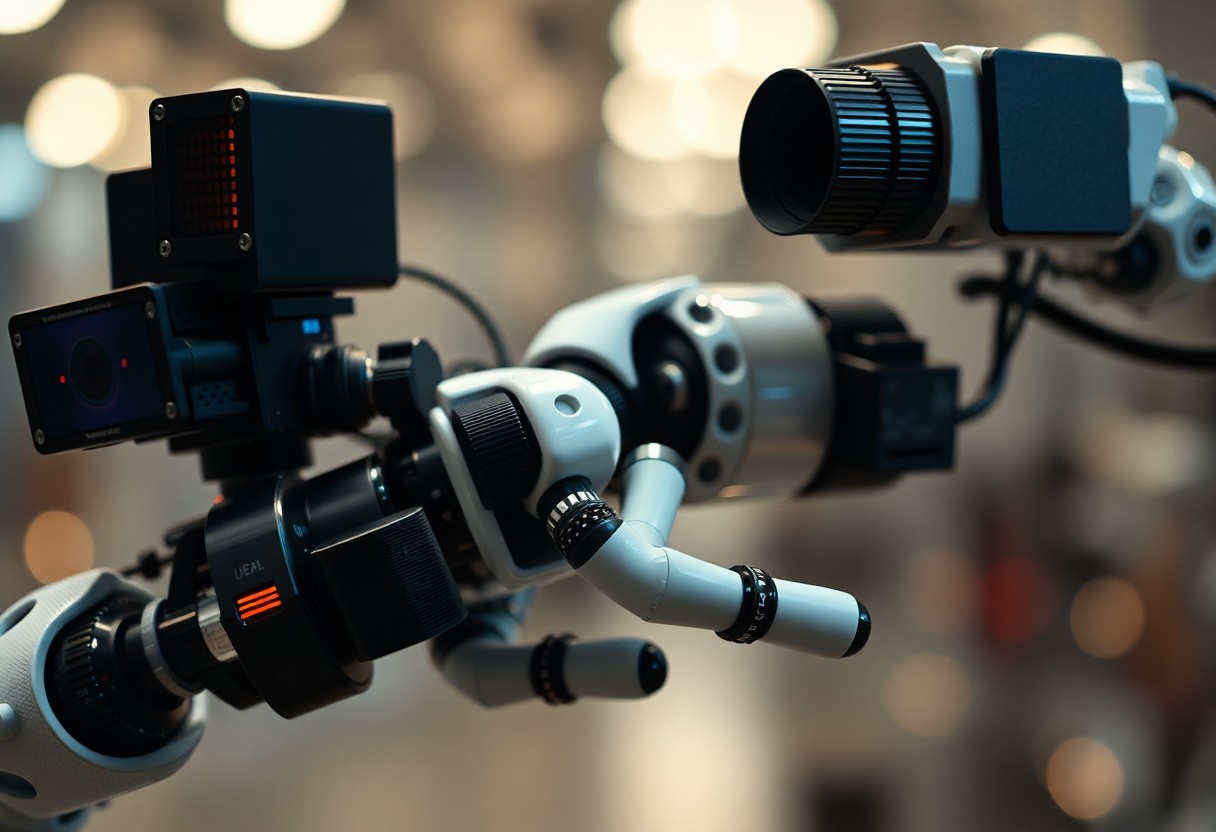Most robotics enthusiasts find themselves navigating a complex world of sensors that play a vital role in robotic functionality. Understanding the different types of sensors and their specific applications will enhance your robotics projects and improve your designs. From distance measuring to environmental monitoring, each sensor provides unique data that helps robots interact with their surroundings effectively. In this post, you’ll explore various sensors, their characteristics, and how they can elevate your robotic creations to new heights.
The Power of Proximity: Ultrasonic and Infrared Sensors
Ultrasonic and infrared sensors serve as vital tools in robotics, enabling machines to measure distances and detect objects within their surroundings. Utilizing sound waves or light beams, these sensors provide real-time feedback to enhance operational efficiency. Their ability to help robots avoid obstacles and navigate complex environments significantly contributes to their functionality and autonomy, making them indispensable for various applications.
Key Mechanisms and Functionality
Ultrasonic sensors function by emitting sound waves that bounce off nearby objects, returning to the sensor to calculate distance based on the time taken for the echo to return. In contrast, infrared sensors emit light waves and gauge the intensity of the reflected light to assess proximity. The simplicity and effectiveness of these mechanisms make them ideal for a range of robotic applications.
Applications in Navigation and Obstacle Detection
In your robotic systems, ultrasonic and infrared sensors are imperative for effective navigation and obstacle detection. They allow robots to analyze their environment, facilitating pathfinding and collision avoidance. For instance, autonomous vacuum cleaners utilize ultrasonic sensors to navigate around furniture, while robotic arms may use infrared sensors to properly gauge workspace boundaries.
The versatility of these sensors extends beyond simple navigation. In warehouse automation, robots equipped with ultrasonic sensors efficiently move through tight aisles while detecting the proximity of shelving units. Similar applications can be seen in drones, where infrared sensors enhance altitude stability during obstacle-rich flying environments. By integrating these sensors, robots exhibit a high degree of spatial awareness, ultimately improving their functionality and safety in both public and private spaces.

The Eyes of Robotics: Visual Sensors Revolutionizing Perception
Visual sensors, particularly cameras, serve as the “eyes” of robotic systems, enabling them to interpret their surroundings effectively. This capability is transforming industries by allowing machines to perform tasks such as object recognition, navigation, and quality control with remarkable accuracy. With advancements in technology, robots can now analyze visual data in real-time, which enhances their ability to make decisions and respond to dynamic environments.
Camera Types and Their Roles in Machine Vision
Different types of cameras play distinct roles in machine vision, catering to various applications in robotics. For instance:
- Standard cameras for general observations
- Infrared cameras for detecting heat signatures
- 3D cameras for depth perception
- High-speed cameras for capturing fast-moving objects
- Color cameras for detailed image analysis
The right camera selection can significantly impact the efficiency and efficacy of robotic operations.
| Camera Type | Application |
| Standard Camera | General Object Detection |
| Infrared Camera | Thermal Imaging |
| 3D Camera | Depth Sensing |
| High-Speed Camera | Motion Capture |
| Color Camera | Detailed Analysis |
Enhancing Robotics with Image Processing Techniques
Image processing techniques are integral to maximizing the utility of visual sensors in robotics. By applying algorithms that enhance image quality, you can significantly improve the accuracy of object recognition and classification tasks. Techniques like edge detection, filtering, and feature extraction allow robots to understand and interpret visual data effectively, enabling them to perform complex actions with increased precision.
In practical applications, image processing transforms raw data captured by cameras into actionable insights. For example, in manufacturing, robots can use image processing to identify defects in products on an assembly line. Algorithms can be implemented to differentiate between acceptable and defective items based on visual cues, drastically improving quality control. By integrating these advanced techniques, robots enhance their perception capabilities, leading to increased efficiency and reduced errors in various tasks across different sectors.
The Senses of Touch: Tactile Sensors in Human-Robot Interaction
Tactile sensors play an imperative role in enhancing human-robot interaction by providing robots with the ability to feel and respond to physical contact. This sense of touch allows robots to handle delicate objects, engage in collaborative tasks with humans, and react adaptively to their environment. With advancements in technology, tactile sensors are becoming increasingly sophisticated, enabling robots to mimic human-like touch responses and improving their ability to work seamlessly alongside people.
Types of Tactile Sensors and Their Mechanics
Several types of tactile sensors exist, each employing different mechanisms to detect touch and pressure. These include:
| Resistive Sensors | Detect changes in electrical resistance when touched. |
| Capacitive Sensors | Measure changes in capacitance due to proximity or touch. |
| Piezoelectric Sensors | Generate electric charge in response to applied mechanical stress. |
| Optical Sensors | Use light transmission to detect pressure and touch. |
| Force-sensitive Resistors | Alter resistance based on the amount of force applied. |
- Each type offers unique advantages for different robotic applications.
- Resistive sensors are simple and cost-effective.
- Capacitive sensors provide high sensitivity.
- Piezoelectric sensors are excellent for dynamic touch detection.
- Recognizing the right type of sensor for your specific needs is imperative.
Improving Safety and Dexterity in Collaborative Robots
Integrating tactile sensors into collaborative robots boosts their safety and dexterity, creating a more effective interaction with human counterparts. By using tactile feedback, these robots can adjust their grip on objects or modify movement speed when detecting human presence, thus reducing the risk of accidents. Enhanced touch sensitivity allows robots to manipulate fragile items without causing damage, permitting efficient teamwork and collaboration in various sectors, including healthcare and manufacturing.
These advancements reflect the ongoing efforts to ensure that robots are not only functional but also safe to work alongside human operators. Collaborative robots equipped with tactile sensors can adapt their responses based on the feedback received, allowing for intuitive handling of tasks ranging from assembly lines to assistive care. As robots become more integrated into daily life, the continuous improvement of tactile sensing technology remains a priority, fostering a more harmonious coexistence between humans and machines. The combination of safety and improved dexterity leads to greater adaptability, enabling robots to respond appropriately in dynamic environments.
The Pulse of the Environment: Environmental Sensors Monitoring Conditions
Environmental sensors are necessary for monitoring various conditions in real-time, allowing robotic systems to adapt their behaviors to changing surroundings. These sensors can track temperature, humidity, air quality, light, and more, providing valuable data for applications ranging from agriculture to industrial automation. By integrating this information, robots can operate efficiently while ensuring safety and enhancing productivity.
Various Environmental Sensors and Their Functions
Environmental sensors come in numerous forms, each serving a specific function. For instance, temperature sensors detect thermal changes critical in climate control, while humidity sensors measure moisture levels to maintain optimal environmental conditions. Air quality sensors assess pollutants and particulates, ensuring clean environments in healthcare or public spaces. Light sensors gauge illumination levels, enabling robots to adjust their operations depending on visibility, thus optimizing performance in different settings.
Integration with Robotics for Smarter Operations
Integrating environmental sensors into robotic systems vastly improves operational efficiency and decision-making. By utilizing real-time data, robots can modify their actions to suit environmental changes. For example, a drone equipped with temperature and humidity sensors can identify areas requiring irrigation in agriculture, significantly enhancing resource management. This synergy empowers robots to not only perform tasks more effectively but also contribute to sustainability efforts by minimizing unnecessary resource consumption.
In practice, smart agriculture exemplifies the benefits of this integration. Farmers employ autonomous vehicles equipped with environmental sensors to monitor soil moisture and nutrient levels, allowing precise watering and fertilization. This not only saves time and costs but also maximizes yield and reduces environmental impact. As robotic technologies continue to advance, the potential applications for environmental sensors expand, paving the way for smarter, more responsive operations across industries.
Beyond Traditional Sensing: The Role of Machine Learning in Sensor Data Interpretation
Machine learning algorithms have transformed the landscape of sensor data interpretation, allowing robots to extract meaningful insights from vast amounts of information. By leveraging advanced techniques like neural networks and pattern recognition, your robotic systems can now learn from experiences, adapt to new environments, and make real-time decisions based on sensor inputs. This shift not only enhances the accuracy of data interpretation but also enables robots to function effectively in unpredictable scenarios.
Data Fusion for Enhanced Decision-Making
Data fusion integrates information from multiple sensors to provide a coherent and comprehensive understanding of the environment. This technique enhances your robot’s decision-making capabilities by combining inputs from visual, tactile, and auditory sensors, creating a richer dataset for analysis. As a result, your robots can perform tasks more efficiently, whether navigating complex terrains or interacting with humans.
Future Trends: Sensor Innovation Through AI
The integration of AI in sensor technology paves the way for innovative developments in robotics. Advanced algorithms not only refine sensor functionalities but also enable the creation of intelligent systems capable of autonomous operation. This evolution fosters improvements in sensor accuracy, miniaturization, and energy efficiency, making it possible for robots to operate seamlessly across diverse applications.
Looking ahead, AI-driven sensor innovations could revolutionize industries ranging from manufacturing to healthcare. For instance, smart sensors leveraging machine learning could enhance predictive maintenance by analyzing operational data and predicting equipment failures before they occur. In agriculture, AI-integrated sensors might optimize resource allocation through real-time soil and crop monitoring, significantly boosting yield efficiency. As technology progresses, you can expect smart sensors to become increasingly ubiquitous, making robotics more capable, adaptable, and integral to everyday tasks.
To wrap up
Summing up, understanding the different types of sensors and their applications in robotics empowers you to make informed decisions when designing or utilizing robotic systems. From proximity to vision sensors, each type serves a unique purpose that enhances your robotics projects. For further insight and detailed guidance, you can explore the Types of Sensors in Robotics & How it Strengthen … your automation efforts, ensuring you effectively utilize technology to achieve your goals.

